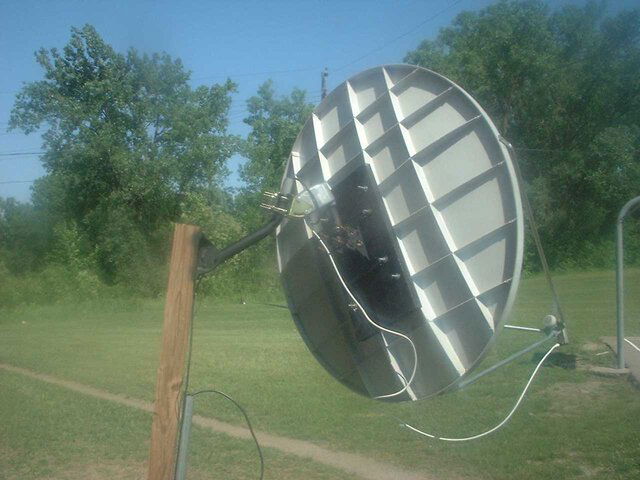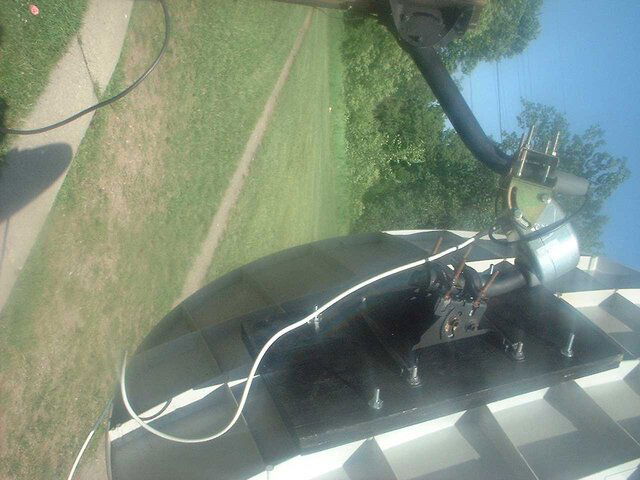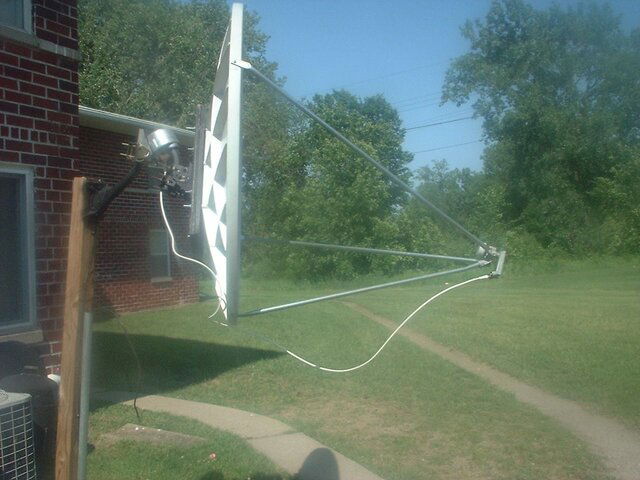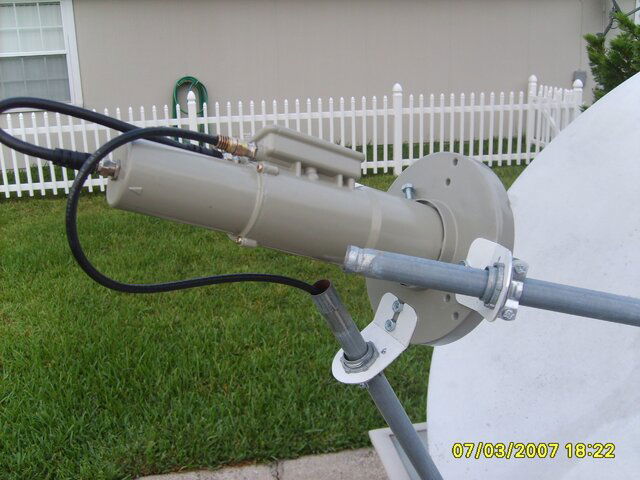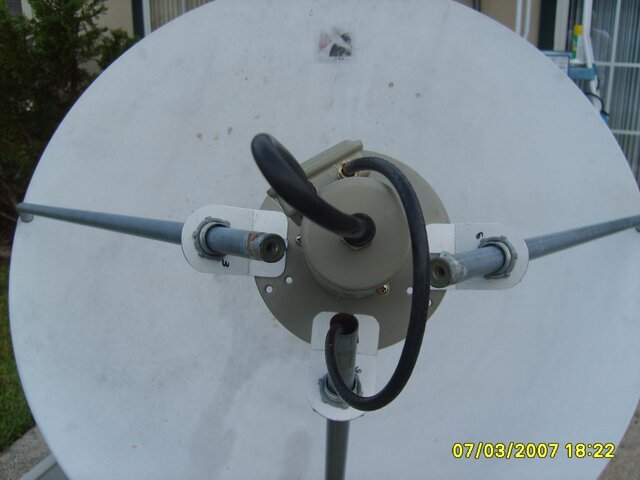Attached is an image of a standard Channelmaster 1.2M Ku feed with the BSC621-2 superimposed over it. Does this look like it makes sence?
I think that the flat scaler will work, although I know some of you have used the "coned" scaler. The "signal cone" appears to require the BSC621-2 to be about 1/4" closer to the dish than the original Ku feed.
I know that some of the adaptions have moved the C/Ku feed further away from the dish. If my layout and dimensions are correct, it appears that those adaptions have placed the C/Ku feed on the far side of the focal point convergance. The signal actually makes an "X' at the focal point and widens as it passes further from the dish. Just as light does as it passes thru a lense.
I'll fabricate a new bracket from aluminum that will replace the original plastic one. The new bracket will relocate the support legs to clear the new scaler, while at the same time allow adjustment closer to and away from the dish on the same angle as the original feed.
Please post your comments and let's kick this thing around.
Harold
I think that the flat scaler will work, although I know some of you have used the "coned" scaler. The "signal cone" appears to require the BSC621-2 to be about 1/4" closer to the dish than the original Ku feed.
I know that some of the adaptions have moved the C/Ku feed further away from the dish. If my layout and dimensions are correct, it appears that those adaptions have placed the C/Ku feed on the far side of the focal point convergance. The signal actually makes an "X' at the focal point and widens as it passes further from the dish. Just as light does as it passes thru a lense.
I'll fabricate a new bracket from aluminum that will replace the original plastic one. The new bracket will relocate the support legs to clear the new scaler, while at the same time allow adjustment closer to and away from the dish on the same angle as the original feed.
Please post your comments and let's kick this thing around.
Harold


